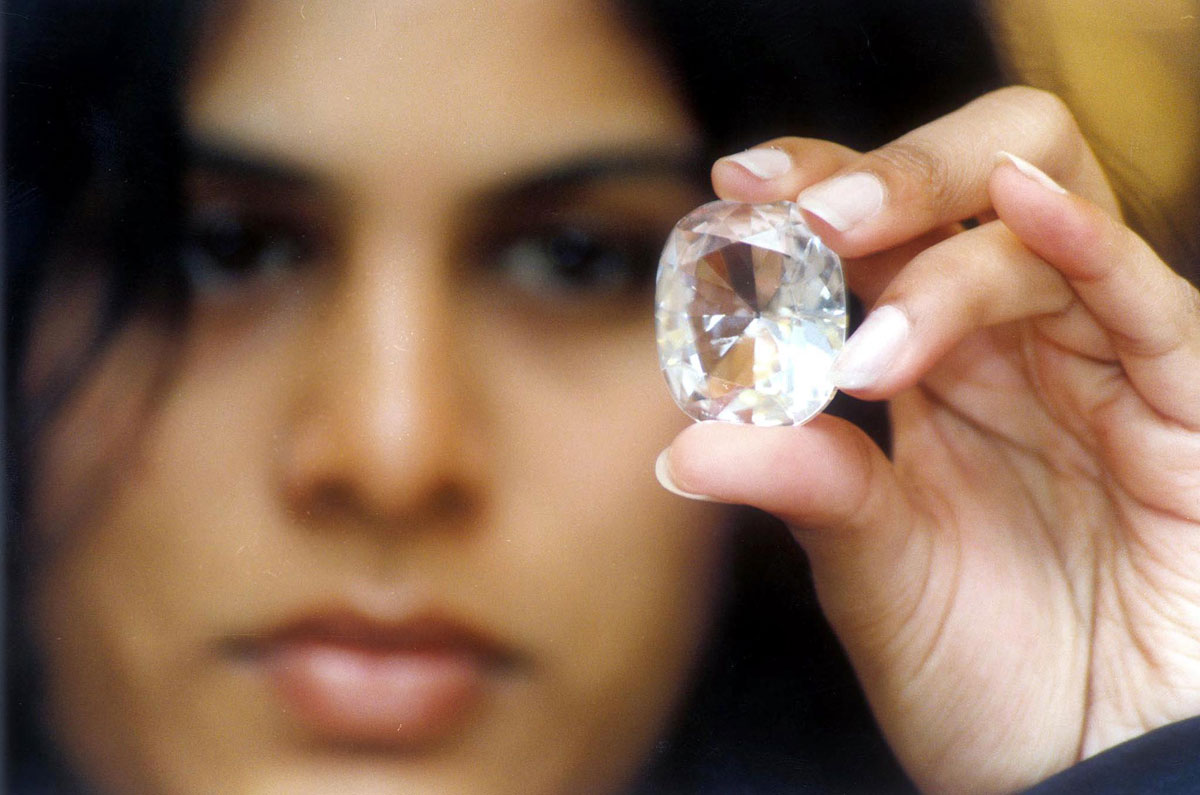Kohinoor, Half Its Original Size: Anita Anand
File photo of executive director of Jewels de Paragon Pavana Kishore showing the “Koh-I-Noor” diamond on display with other famous diamonds at an exhibition entitled “100 World Famous Diamonds” in Bangalore, May 19, 2002. The Koh-I-Noor diamond, which once belonged to Mughal Emperor Shah Jahan, weighs 105.60 carats, is now part of the British crown jewels, stored in the tower of London. (AFP/Getty Images)
The Kohinoor we know today is half of its original size as prince Albert had the coveted gem cut from best diamond cutters to add sheen to it, said noted UK-based Indian journalist Anita Anand, in Jaipur, Jan. 20, writes Meraj Bhat. – @siliconeer #siliconeer #Kohinoor #IndiaJewels #BritishQueen #KohinoorDiamond
Narrating a fascinating story about the voyage of the diamond, Anita said the prestigious gem arrived in England in a ship and was put in a “gilded cage,” but failed to impress people as it had no shine on it.
“Kohinoor was mocked in England as a lumpen piece of crystal which did not sparkle. It just did not shine,” Anita said at a session at the 10th edition of the ongoing Jaipur Literature festival.
“Prince Albert thought he should do something about it and made it cut from top diamond cutters of the time to add shine to it. It is after that cut the Kohinoor became what it is today – half the size of its original,” she said while commenting on her new book ‘Kohinoor: The Story of the World’s Most Infamous Diamond’, which she has co-authored with famous historian William Dalrymple.
Anita also said about six million people went to watch the precious diamond when it was put on display in the Great Exhibition in 1851.
Queen Victoria was fond of the Kohinoor and when it was presented to her she incidentally had an injury mark on her head. This helped in cementing the already popular notion that the Kohinoor had a bloody legacy.
Historically the gem had brought bad luck and violence to all those who possessed it.
About Lord Dalhousie, who was the youngest Governor General of India when he assumed charge at the age of 36 in 1848, Anita said he was “deeply ambitious” and wanted “not just to take the whole of Punjab to England, but also the Kohinoor.”
“Dalhousie annoyed East India company by taking this decision to give the Kohinoor to the queen Victoria,” she said.
Anita said they have refrained from “taking positions” in the book because there is still so much “mythology and drum-banging” that surrounds the history of the Kohinoor.
Picking Ahmed Shah Abdali as his favorite character of the book, Dalrymple said the Afghan was an “extraordinary character who rose to power from being a pickpocket and was lying in a dungeon in Kandahar before Nadir Shah released him and went on to defeat the Marathas and conquering Kashmir, Afghanistan and much of Iran.”


